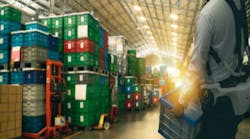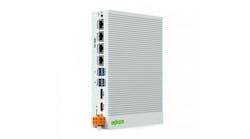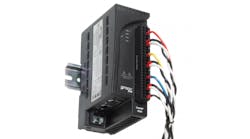Man + machine: Exoskeleton trends and advancements for industry
With growing pressures from worker shortages, e-commerce demands, and COVID-19 social-distancing rules, industries from manufacturing to logistics need new tools to increase productivity while keeping their teams safe. For many companies, full-body, powered exoskeletons offer an effective solution for production lines, shipping and receiving bays, construction sites, and other complex work environments.
As a result, a wide variety of industries will begin deploying exoskeleton technologies in the very near future, as exoskeletons are applicable for a wide range of environments and tasks where lifting heavy materials or awkward objects is required and cannot be met by standard, mechanized lift systems and full automation is not possible.
Exoskeleton landscape
The term “exoskeleton” applies to many solutions; these range from partial back-and-limb support for repetitive production-line tasks, to medical rehabilitation, to more heavy-duty powered industrial solutions that assist with strength augmentation and complex tasks. There have been significant advancements in robotics—particularly exoskeleton technologies—over the last five years.
An important distinction is “where and how” exoskeletons are powered. Many types of industrial exoskeletons available today are partial body, passive-types. They use non-powered mechanical means to support isolated areas of the body. Compared to powered exoskeletons, these passive units are less expensive, handle lighter loads, and are typically used to reduce fatigue from repetitive tasks such as overhead fabrication and tool use. Alternatively, powered exoskeletons use motorized joints to amplify operator strength and enable mobility.
ABI Research projects that by 2030 the global market for powered exoskeletons will exceed $11.5 billion. While some portion of the market will be for partial-body units, full-body powered variants are expected to make up a large percentage of the overall industrial exoskeleton market.
Improved safety and productivity
On their own, most workers would be hard-pressed to lift and move 200-pound loads for an entire shift. However, full-body, powered exoskeletons transfer their weight and the carried object’s weight directly to the ground, relieving the operator’s physical burden while simultaneously enhancing their strength and endurance. This capability allows the operator to easily manage heavy, awkward, and bulky objects in places where automation and cumbersome lift devices are not feasible. The payoff is increased productivity, fewer lifting injuries, and greater staffing and production flexibility. These augmentations can help workers avoid back, shoulder, knee and other common injuries.
COVID has added a new wrinkle to both safety and productivity; the virus can put workers’ health at risk. Even those who are not infected may need to quarantine for weeks. As a result, healthy employees must compensate with longer hours, and tired workers can be more injury-prone.
Robotic exoskeletons can help maintain productivity when people cannot come to work. This situation is not unique to COVID; bad flu seasons can have a similar impact. Augmented strength means exoskeletons can help one person do a job that may typically take several people to accomplish, ultimately compensating for lost productivity without risking injury.
Filling the automation gap
Automation is a wonderful tool, but it does not address every need. Some industries manufacture high-mix parts with wide variations in size and shape. Other sectors, such as construction and oil and gas, have processes that are not easily automated.
Even highly automated manufacturing operations must manage variable components in environments that are dynamic and unstructured. Examples abound in shipping and receiving, kitting, and assembly processes such as sequencing heavy or oddly-shaped parts. These areas are not suited for full automation, and a more agile approach is required.
In these cases, the problem is addressed by people who step in to manage material handling, generating wear-and-tear on the workforce. Robotic exoskeletons can fill these gaps. They empower operators to safely and efficiently package, unpackage, move and attach parts, and perform other arduous tasks.
Supporting industry needs with flexibility
Full-body, powered robotic exoskeletons can be used in a myriad of environments and applications. They can be deployed to support agile manufacturing, e-commerce, logistics, food processing, construction, ship repair, and other industries with little to no customization required.
Industries, such as e-commerce, facing worker shortages and increased demand—requiring them to do more with less—can also benefit. Exoskeletons can open the aperture of the worker pool by taking “strength” out of the equation. This means more people with smaller statures can compete for strenuous jobs previously inaccessible to them, and the physical augmentation they provide enables workers to maintain productivity as they age.
We are only beginning to see the impact full-body, powered exoskeletons can have. Looking ahead, we expect to see continued maturation around IoT and technologies such as virtual reality (VR) and machine learning (ML). As these technologies evolve, we will see exoskeleton robots take advantage of these innovations to provide even more value to the industrial landscape. However, the need for humans to remain in the loop will remain central to complex tasks, as there is no substitute for human intellect and judgment.
By Kristi Martindale, chief product & marketing officer, Sarcos Robotics


